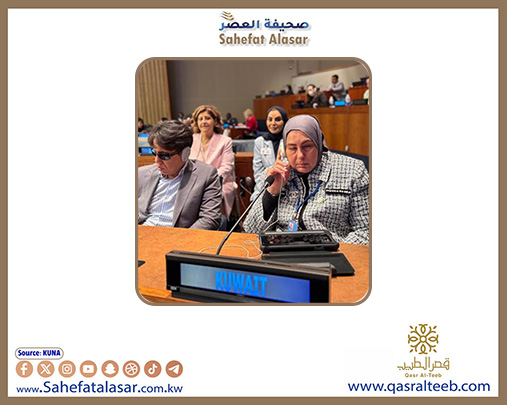


Kuwait has described the use of artificial intelligence in serving visually impaired persons as a "qualitative leap" for their societal empowerment, enabling self-reliance and active participation in daily life, work, and education.
This statement was delivered in Kuwait's address by Dr. Hanadi Al-Omani, Director of the Special Needs Center at the Kuwaiti Lawyers Association, during Wednesday evening's roundtable titled "Leaving No One Behind: Using AI as a Tool to Support Inclusion and Enhance Participation of Persons with Disabilities" at the 18th Conference of States Parties to the Convention on the Rights of Persons with Disabilities.
Al-Omani noted: "While concerns exist regarding AI—including potential misuse and data privacy threats—these challenges are matched by significant opportunities to enhance autonomy and facilitate social interaction."
She demonstrated how AI adaptation has:
Converted written text to audible speech
Facilitated social interaction in personal/professional settings
Enhanced Braille literacy
Enabled voice-assisted technologies (Alexa/Google Assistant) for sending messages, making calls, setting reminders, and retrieving information
Powered screen readers for academic research and knowledge transfer
Facilitated efficient remote work, reducing mobility needs
Guided users in public spaces through audio/vibration alerts (obstacle detection)
Featured applications like Microsoft's Seeing AI for facial/text/object recognition
However, Al-Omani cautioned about:
The need for inclusive, equitable AI development (current language limitations)
Ensuring user privacy in image/voice analysis tools
Providing technical support and digital literacy training
Concluding her address—which highlighted her trailblazing journey as Kuwait and the Middle East's first licensed blind lawyer and the Arab world's first director of a bar association's special needs center—she emphasized:
"AI serves as a powerful tool for empowering visual independence and full societal integration, but its success depends on inclusive design that actively involves persons with disabilities in development processes, as they best understand their needs and can evaluate real-world applicability."*
